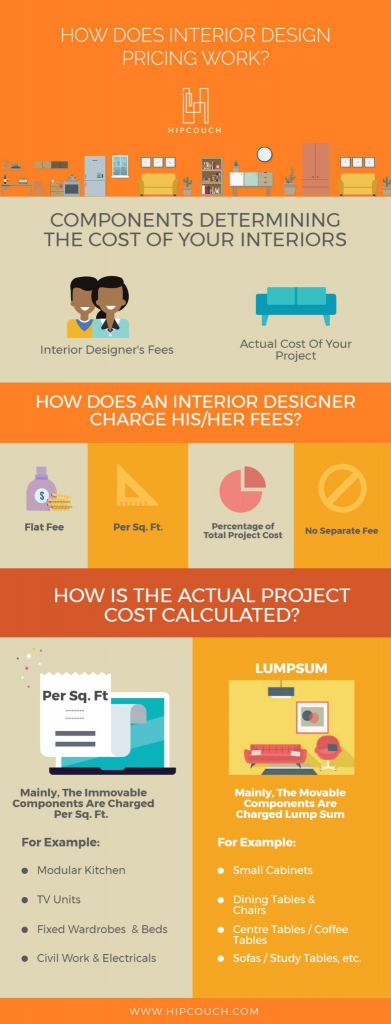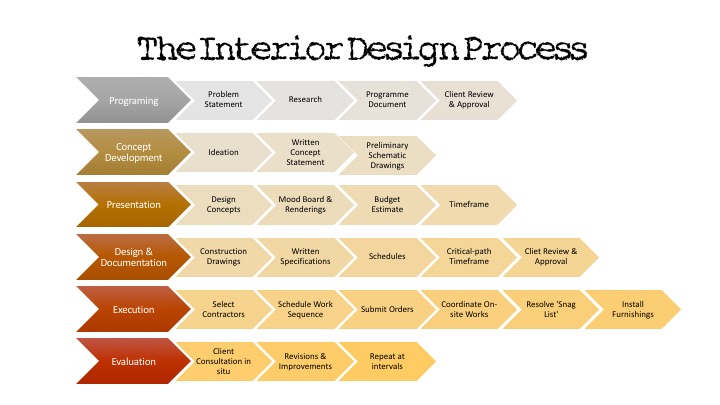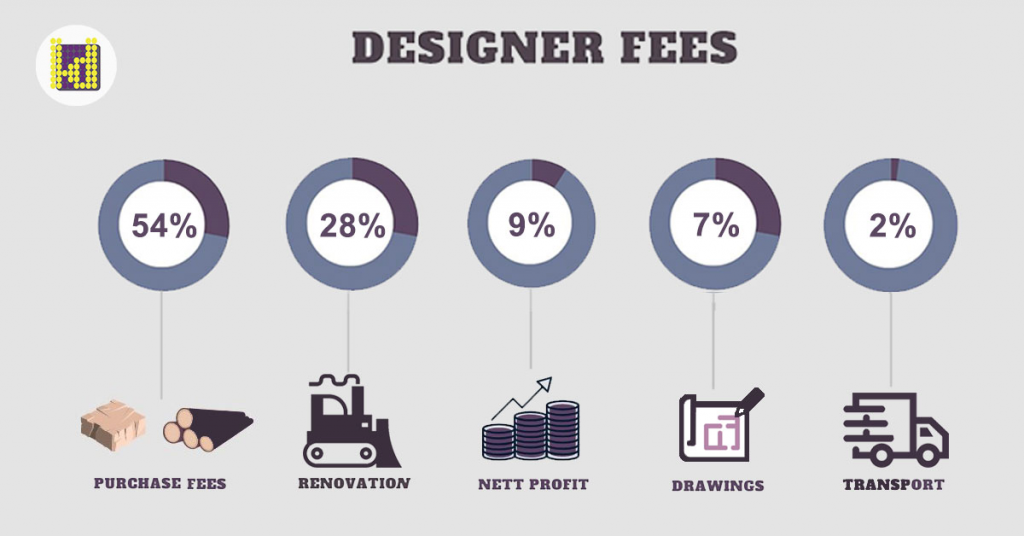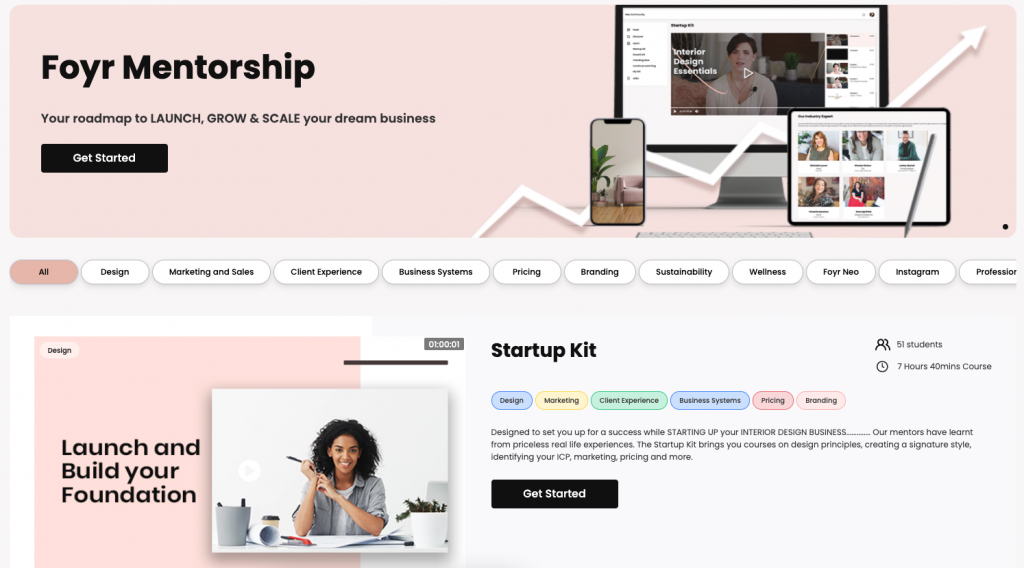Profit Margins for Interior Designers
These days, interior design is a sought-after profession in the corporate world. The primary challenge interior designers face today is figuring out how to maintain their finances while developing and implementing a profitable business plan.
To determine how your business is doing, the best way is to figure out how good your profit margin is.
The aesthetics of the design community might change, but the cost of operating an interior design firm remains consistent. Whether utilizing advanced interior design software or manual planning, there is no fixed margin in the interior design business. The pricing varies from one project to another, often depending on the level of expertise and tools, like interior design software, required.
Most interior decorators and their firms maintain a gross profit margin of 35-40%. It’s also a general rule for all interior design services, especially those incorporating interior design software to streamline operations, to budget for 20-30% net profit. A well-planned budget, influenced by your business model and software investments, should typically represent 3-12% of your gross sales revenue.
Read also – How To Generate More Revenue in Interior Design Business?

Image credits: pexels.com
How much profit margin should an interior design business or an individual designer maintain?
How you provide your services determines whether you can become a capable interior designer. Seen as a whole, it is a viable industry. Salaries for new interior designers in the United States range from $32,015 to $48,337, with an average income of $40,019. The salaries depend on factors like location, qualification, experience, and turnover of the business.
If you are starting a new interior design business, defining your brand and selecting the best pricing strategies is difficult. The operating expenses of a small business will also add up. These situations cause interior designers to lose money, despite their best work and effort.
So, to answer the question, according to successful interior designers in the United States, if you are starting out as an interior design business, you should have a 25-30% net profit after paying yourself a salary. This will help increase your chances of achieving success.
7 reasons why your profit margins are not enough:
Here are a few things that can bring down your interior design company’s profitability.
1. Not charging an appropriate fee
The first error that interior designers make is not charging for their research work. They don’t bill the time spent studying the potential client requirements and procuring materials per square foot, financing, and other aspects of project management.
It’s natural to want to go beyond what the clients asked for to ensure their satisfaction. However, while the effort may be appreciated, you also deserve to be fairly compensated. Unless you are appreciated in terms of pay, the motivation to go beyond the scope of work will decrease gradually.
Read also – Interior Design Fees
Image credits: hipcouch.com
2. Not considering tax liability
Not budgeting for revenue lost to taxes can deplete more than 30% of your gross sales. Keep track of how much money you make and what your business expenditures are.
When you have the business plan of a sole proprietorship or limited liability company, you don’t have an employer to deduct taxes. Even if you’re freelancing as a side hustle while studying or working in another job, you have to collaborate your earnings to calculate your taxable amount. The Internal Revenue Service has strict regulations about taxable income levels that should not be ignored.
Read also – Sales Tax for Interior Designers
Image credits: furniturelightingdecor.com
3. Improper accounting
Inaccurate forecasts on profit margin can occur due to improper accounting. If you don’t review your total earnings and track your expenses, you might not even realize if client payments are late, which can affect your profit margin the most.
When starting to run your interior design business, you must keep records of your cash inflows and outflows. It is the difference between your accounts receivable (the money owed to you) and accrued expenses (the money you owe to vendors).
Hire an accountant to maintain records like payment dates, send payment reminders on or before the due date, and so on. Before the installation day, check if all the products have been accounted for. This is one of the most important installation day tips for interior designers.
Image credits: intuit.com
4. Inconsistency in securing high-paying clients
When interior designers first start their businesses, they quickly discover that there are a few major challenges to gaining new clients. With plenty of time spent on expanding your interior design firm, you will most likely be able to overcome most of these challenges, and you may even find yourself turning down work. While it may appear counterproductive, being able to walk away from underpaying or complicated clients gives you significantly more bargaining leverage and the freedom to say no.
An important component of evaluating projects and customers in determining how you feel about them and then communicating with the prospects of the project. The ability to do this well is known as emotional intelligence, and it refers to the ability to predict whether you will be able to maintain a happy, and profitable work relationship with the client.
Difficult customers cost you money because they demand your time, cause tension that prevents you from focusing on other clients, nitpick your expenses, worry about slow or no payment situations. Taking on difficult clients is not good for the business, especially if you are just starting out.
Read also – 10 Best Client Management Tips for Interior Designers
Image credits: jochrobak.com
5. Making the correct team
Another common problem that interior design companies face is in discovering the best people for the job. Finding people with a certain work ethic, enthusiasm, and values can be challenging, be it contracting out work or planning to recruit someone for their own business.
Another issue is partners who perform substandard work or fail to reach agreed-upon deadlines. A salaried worker who is not appropriate in their work can cost his or her employer a lot of money.
Interior design necessitates a great deal of collaborative efforts, be it with other interior decorators or with vendors. To become a great interior decorator, you must have an outstanding team of people who can carry out all of the operations smoothly and efficiently.
Image credits: pexels.com
6. Taking up free work
While starting a new business or beginning as a freelancer, you might be too eager to take on projects for free to build your portfolio.
Taking on free or deeply discounted projects is a great way to gain initial credibility and recommendations. It’s a commonly followed practice too. But, you should do it only for a few projects at the beginning of your career. Then, you must quickly switch to charging by the project or by the hour.
Once you have defined your plan and how much you want to work towards a project, you can determine strategy. Charge your fee according to your goals and your work pattern.
For example, a well-known designer who completes a project in four months (while others take eight) may charge a lump-sum design fee plus a product markup. Another designer who devotes months working closely with the client daily may prefer to charge by the hour.
Younger or inexperienced designers may lack the motivation to demand a design fee straight away. So, they might opt for hourly pricing and, as a result, sometimes sell themselves short.
Image credits: miragestudio7.com
7. Your compensation is unreasonably low
One of the most popular reasons for interior designers to lose money in their businesses is they charge exceptionally low at the start of their careers and don’t increase their fees later. While pricing can often be difficult to determine, interior designers usually charge their fees according to one or a combination of the following modes:
- Fixed rates
- Hourly rates
- Percentage over costs
- Costs per square meter/square foot
- Retail price
- Department store retail price
- Combination rates
7 things to do to have a better profit margin in your interior design business
1. Define your scope of work
Defining the sought-after scope of work is one of the most commonly given installation day tips for interior designers that comes in very handy. Before starting a project, establish a “scope of the project” with the customer to ensure that you do not provide unpaid labor.
This scope defines the work you will perform on behalf of the customer, the hourly rate, and the approximate time it will take to finish the project upfront.
On the installation day, tick off the items done. This will ensure you have achieved everything mentioned in the scope. With an appropriate project scope, you and the client will have clear expectations about the total estimated costs.
Read also – Guide To Interior Design Project Management
Image credits: interiordesignstudent.com
2. Review your pricing strategies
If you have more tasks than you can handle but aren’t making enough money, you are charging too low. You then need to find out what works for you. Tell your customers that you will be raising your rates due to increased business.
If your clients abandon you solely because of pricing, they did not respect your expertise in the first place and were perhaps only trying to get the best deal (this is not an ideal client). On the flip side, if you are losing clients in the pricing stage, your prices may be too high.
Research your competitors and see what they charge for comparable work. You can also lower your rates during following client meetings to see if you win more clients and projects. Remember that once you are working with a profitable venture, you can have more say over what work you accept and how much you charge.
Read also – Pricing Strategies for Interior Designers
Image credits: latitudedesignsb.com
3. Don’t go overboard
Don’t attract investment that you can’t afford to cover, whether you have a new business or an established one. In other words, don’t spend a lot of money unless you have a written agreement that the client will cover specific costs.
Set a clear expectation of output. It should be precise so that you can be certain whether or not you have accomplished it. It’s easy to get sidetracked while working on something. As a result, you must consistently re-adjust yourself with the output data.
To accomplish this, whenever you are about to perform a subtask, ask yourself, “Do I still need to do this to get the task done?” Can I simply skip it or do it in a more productive – manner?” These questions will assist you in evaluating your work style and getting back on track. The best way to complete work within a deadline is to use an inverted pyramid structure. Do the subtasks in the order of most important to least important.
Read also – 10 Best Investment Tips for Interior Designers and Firms
Image credits: dashilft.de
4. Restrict the number of initial sessions
Some prospective clients will take up hours of your time with in-person creative brainstorming sessions before choosing to work with you. Let them know at the beginning of your engagement that the first session will be free and that you will create a project proposal. But, if you invest more time in such meetings than mentioned initially, you should charge an hourly rate for initial conversations.
Your letter of agreement should specify your hourly rate and billable hours. Your clients should be informed well in advance that you will charge them for the following meetings. This practice may feel awkward initially, but it will allow you to decrease the time spent in meetings while increasing your profitability by monetizing all of your work.
Further, if you know how many initial consultations each client will require in advance, consider developing a monthly retainer so that the client is aware of the costs involved.
Read also – 20 Best Client Presentation Tips for Interior Designers
5. Improve your online presence
Expand your online interior business platform to attract the ideal clients. You may be aware of the significance of a visually appealing website. It brings you a large amount of traffic that goes well beyond the site’s elegance. If you have a cluttered website or a barebones one, you shoot yourself in the foot.
Learn about the strategies used by other interior decorators to increase traffic to their websites and social media. By connecting your online presence with your brand image, you can build a brand that immediately identifies you.
Read also – Digital Marketing for Interior Designers
Image credits: growth99.com
6. Keep track of your taxes
Taxes are the only definite part of a business (after reaching a certain revenue level). Without a finance background, it can be challenging to determine how much money you should set aside for taxes. The following factors will determine the amount you must pay as taxes on a broad basis:
- Your total earnings (e.g., gross income).
- Your total costs (e.g., anything purchased for the firm is a business expense).
- Your company’s legal structure, whether it is a partnership, a limited liability company, a sole proprietorship, etc.
Read also – Financial Management for Interior Designers
7. Hire accountants who understand your business
As an interior designer, it’s your job to buy materials, furniture, etc., on behalf of your clients. The client should reimburse you for these. Even though designers take deposits or advance from clients, they provide huge credits for extended periods. You need an accountant to manage such long credits.
If you are shopping for the client, there will be a lot of products that you will get at a wholesale price. You should charge a commission for the same. Discuss the percentage with your accountant.
As a beginner, you might charge by the hour, but start charging a flat fee upfront as you earn experience and grow with your work. The advantage here is to gain from the difference in retail and wholesale pricing.
Read also – 15 Bookkeeping Tips for Interior Designers
Another reason accountants are important in the design industry is that they are well-versed with business fundamentals. Their specialized skills in company operations will help you maintain a healthy cash flow. They will also guide you to navigate business concerns that you would not have learned about in design school.
Learn and grow your business with Foyr opportunities
Foyr is an online interior design platform used by many businesses and individual designers. If you want to prosper in the field, you should try it out. You can boost your design business and increase your profits by joining the Foyr community.
The videos and webinars provide effective solutions customized to interior design business challenges. This way, designers can identify problems and their solutions well in advance. You can understand what works for you and save money and energy on projects. You can also gain access to hours of educational content for free.
Conclusion
Interior designing is a highly lucrative profession in today’s world. But if you are a beginner in the industry, managing clients, deliveries, and profits can get a bit overwhelming. You can learn to develop your skills and accelerate your interior design business with the Foyr Community.
The Foyr Community’s network of skilled interior designers can teach you how to smoothly run an interior design business. Foyr Community’s training modules, such as the Growth Kit, are compiled by highly experienced interior decorating professionals.
In the personal ‘Portfolio’ section of your profile, you can also display your work and your design aesthetics. Join the Foyr Community for free to resolve queries, ask questions, and display your projects.




















